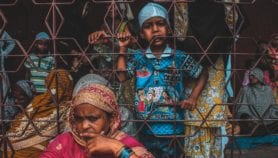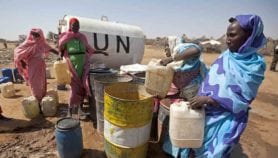By: Max Martin
Send to a friend
The details you provide on this page will not be used to send unsolicited email, and will not be sold to a 3rd party. See privacy policy.
The strapline of a recent news article in The Economist claims “a wave of unaccompanied children swamps the debate over immigration” in the United States. [1] The story reports that children — only occasionally accompanied by their mothers — make up the majority of illegal Central American migrants to the United States.
If we ignore The Economist’s unhelpful and stereotypical use of flood imagery to describe the effects of migration, the news raises a curious question. Why do families send their children across borders clandestinely, risking accidents, detention, possibly even violence?
New research that draws on behavioural economics and social psychology to understand decision-making, especially in relation to climate-related migration, is beginning to shed light on why people choose to migrate. It is a question that demands a rigorous scientific enquiry. After all, people’s behaviours and process of decision-making are complicated, so we need scientific evidence to understand them.
Research shows that migrants are often driven by a sense of obligation to friends and family and feel deeply that their journeys will provide a better and safer future for themselves and — by sending money — for their relatives back home. This often prompts them to take risks such as crossing oceans or barbed wire fences to reach their destination.
Yet other research, including my own, has shown that some migrants are motivated mainly by the prospect of an easier and more affluent life for themselves (as people from developed nations tend to assume). So clearly we shouldn’t make any generalised assumptions about what motivates migrants.
As my former supervisor, Nicholas Van Hear, deputy director of the Oxford Centre on Migration, Policy and Society, sums up: “People may move to escape life or death circumstances; they may move to escape intolerable living conditions; they may move to better themselves; or they move for a combination of these and other reasons … motivations may change en route and after arrival.” [2]
Rather than having a simple cause, each migration decision is shaped by a “unique combination of experiences, biases, assets and perceptions”, as my current supervisor Dominic Kniveton at the Sussex University Department has noted. [3]
This being the case, researchers have started to develop computer models that ‘weigh up’ these factors. The models can be integrated with geographical and climate information to simulate whole systems: of people, their environment and climate. These models are beginning to reveal meaningful insights and predictions about what will trigger migration. This is particularly relevant for understanding how climate change might drive migration in unfolding situations.
More efforts are needed to develop and validate such models into robust scientific tools. These will then be useful for informing policy so that it helps migrants and those trapped in risk-prone places.
Max Martin is a doctoral candidate at the University of Sussex, United Kingdom, researching on climate-related migration. The views expressed are his own.
References
[1] Under age and on the move: a wave of unaccompanied children swamps the debate over migration (The Economist 28 June 2014)
[2] Nicholas Van Hear Mixed Migration: policy challenges (The Migration Observatory at the University of Oxford, Oxford 2011)
[3] Dominic Kniveton and others Agent based model simulations of future changes in migration flows for Burkina Faso ( Global Environmental Change, 21, S34-40 2011)














